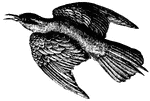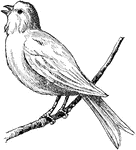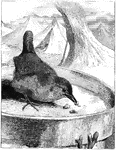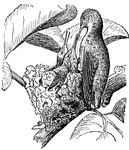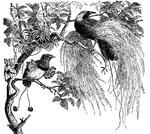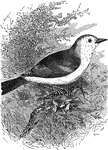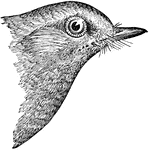179 illustrations of birds including: accentor, adjutant, agami, albatross, alectrurus, anhinga, ani, apterynx, araçarl, auk, avocet, baloeniceps, barbet, batara, bee-eater, bird of paradise, bittern, blackbird, bluebird, boatbill, boblink, bowerbird, bulbul, bunting, bustard, butcher-bird, and buzzard
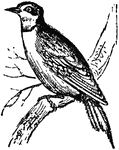
Bee-eater
A group of birds with rich colored plumage, slender bodies and usually elongated central tail feathers.
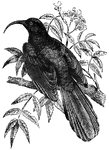
Namaqua Bee-Eater
The namaqua bee-eater, native to Western Africa. Its diet consists of insects, particularly bees and…

Bell-Bird
"Chasmorhynchus niveus, the Bell-bird, ...have lores and orbits bare. The plumage is ordinarily plain…
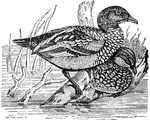
White-Fronted Bernicle
"The Bernicle-goose is so called from a foolish tradition of the middle ages of their being produced…
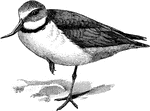
Wry-bill
Anarhynchus frontalis, the Wry-bill of New Zealand, is grey, with a black gorget and whitish lower parts;…
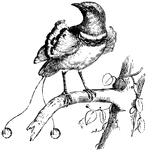
Bird of Paradise
Birds-of-paradise are brilliantly colored, many having tufts or wires that float on the breezes.
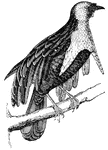
Bird of Paradise
Birds-of-paradise are brilliantly colored, many having tufts or wires that float on the breezes.
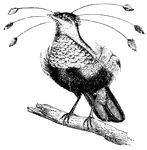
Bird of Paradise
Birds-of-paradise are brilliantly colored, many having tufts or wires that float on the breezes.
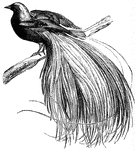
Bird of Paradise
Birds-of-paradise are brilliantly colored, many having tufts or wires that float on the breezes.
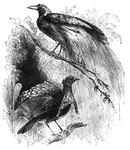
Bird of Paradise
A pair of birds of paradise, the emerald bird of paradise (above) and the superb bird of paradise (below).
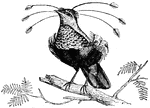
Golden Bird of Paradise
"The Golden Bird of Paradise has a beak furnished with short feathers for half its length."
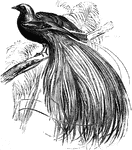
Greater Bird of Paradise
The Greater Bird of Paradise was once called as the Emerald Bird of Paradise because of the dark green…

King Bird of Paradise
Birds of Paradise are allied to the crows and found mainly in New Guinea. The king bird has beautiful…

King Bird of Paradise
A bird 6 to 7 inches in length with its middle tail feathers about as long. The male is chiefly of a…
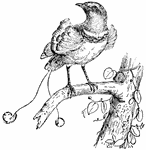
King Bird of Paradise
"The King Bird of Paradise is a rare bird, a native of the islands of Molucca."

Great Sickle-Bill Bird of Paradise
The Great Sickle-Bill (Epimachus speciosus) is a bird of paradise in the Paradisaeidae family.
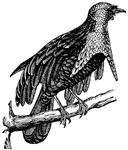
The Superb Bird of Paradise
"The Superb has a beak furnished with elongated feathers, extending half its length.
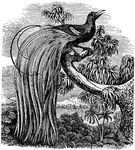
The Bird of Paradise
The Bird of Paradise is the common name of a family of birds, Paradiseide of ornithologists, found chiefly…
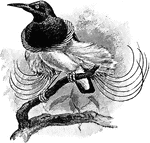
Twelve-Wired Bird of Paradise
The Twelve-Wired Bird of Paradise (Seleucidis melanoleucus) is a black and yellow bird of paradise named…

Wallace's Standardwing
Wallace's Standardwing (Semioptera wallacii) is a passerine bird in the family of Birds of Paradise.
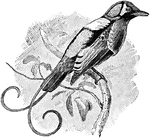
Wilson's Bird of Paradise
Cicinnurus respublica: a species of Bird of Paradise in the subgenus Diphyllodes.
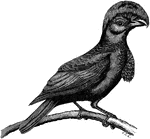
Amazonian Umbrella Bird
"Cephalopterus ornatus, the Umbrella bird, is entirely black, with a huge expanded umbrella-like crest…
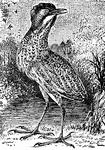
Bittern
"The bitterns are distinguished from the herons proper, besides other characteristics, by having the…

Bittern
"Botaurus. Bittern. Bill moderately longer than head, shorter than tarsus, which is shorter than middle…
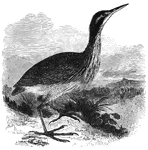
American Bittern
Measuring approximately twenty-six inches in length, the American bittern is a nocturnal hunter. It…
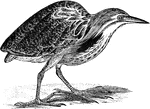
American Bittern
"Botaurus mugitans. American Bittern. Indian Hen. Stake-driver. Bog-Bull. Plumage of the upper parts…
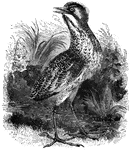
Common Bittern
The common bittern of Europe feeds at night, primarily on frogs, lizards, small birds, and fish.

Sun-Bittern
"Eurypyga helias, Sun-Bittern, has a black head, with a white stripe above and under each eye, and a…
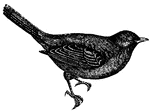
Blackbird
The blackbird is shy and artful by nature, and shows extreme caution in approaching any object of suspicion.
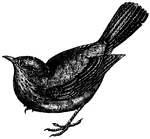
Blackbird
The blackbird is shy and artful by nature, and shows extreme caution in approaching any object of suspicion.
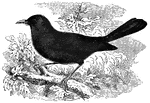
Blackbird
Black with a yellow bill, the blackbird feeds mostly on larvae, snails, worms, insects, and fruits.
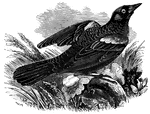
Red-Winged Blackbird
Also known as the red-winged oriole, the red-winged blackbird is known for gathering in immense flocks,…
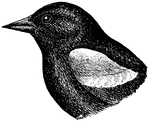
Red-winged Blackbird
The Red-winged Blackbird (Agelaius phoeniceus) is a passerine bird of the family Icteridae found in…

Red-winged Blackbird
"Agelaeus phoeniceus. Blackbird. marsh Blackbird. Red-winged Blackbird. Red-and-buff-shouldered marsh…
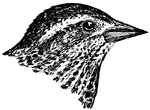
Red-winged Blackbird (Female)
The Red-winged Blackbird (Agelaius phoeniceus) is a passerine bird of the family Icteridae found in…

Yellow-headed Blackbird
"Xanthocephalus icterocephalus. Yellow-headed Blackbird. Male: Black, including lores and small space…
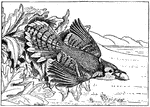
Blue Jay
The Blue Jay (Cyanocitta cristata) is a passerine bird, and a member of the family Corvidae native to…

American Blue Jay
"The American Blue Jay is a beautiful bird that is common near all sections of the United States, from…

Eastern Blue-Bird
"in full plumage: Rich azure-blue, the ends of the wing-quills blackish; throat, breast, and sides of…
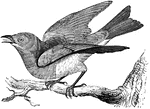
Bluebird
The bluebird feeds on a diet of insects and spiders in the summer and berries in the winter. It usually…
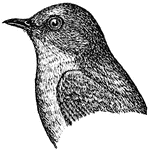
Bluebird
The bluebirds are medium-sized, mostly insectivorous or omnivorous birds in the genus Sialia of the…
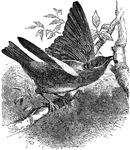
Bluebird
An illustration of a bluebird. The bluebirds are medium-sized, mostly insectivorous or omnivorous birds…
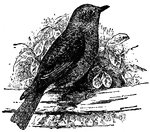
Bluebird
The bluebird eats caterpillars, cutworms, grasshoppers, and wild fruit, especially berries.
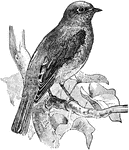
Eastern Bluebird
The Eastern Bluebird (Sialia sialis) is a medium-sized bird in the Turdidae family of thrushes.
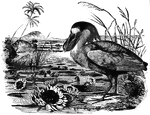
Boatbill
Also known as the crested savacou, the boat-bill gets its name from the shape of its beak, which resembles…
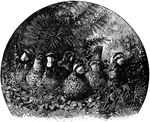
Bob-white Family
"Ortyx virginiana. Virginia Partridge or "Quail". Bobwhite. Male: Forehead, superciliary line, and throat,…

Male and Female Bob-whites
"Ortyx virginiana. Virginia Partridge or "Quail". Bobwhite. Male: Forehead, superciliary line, and throat,…

